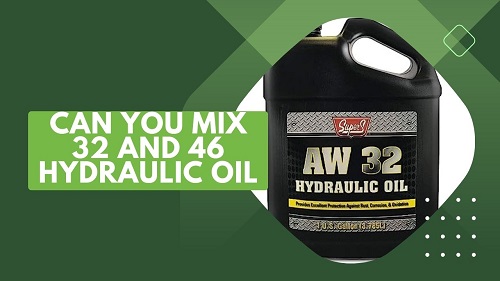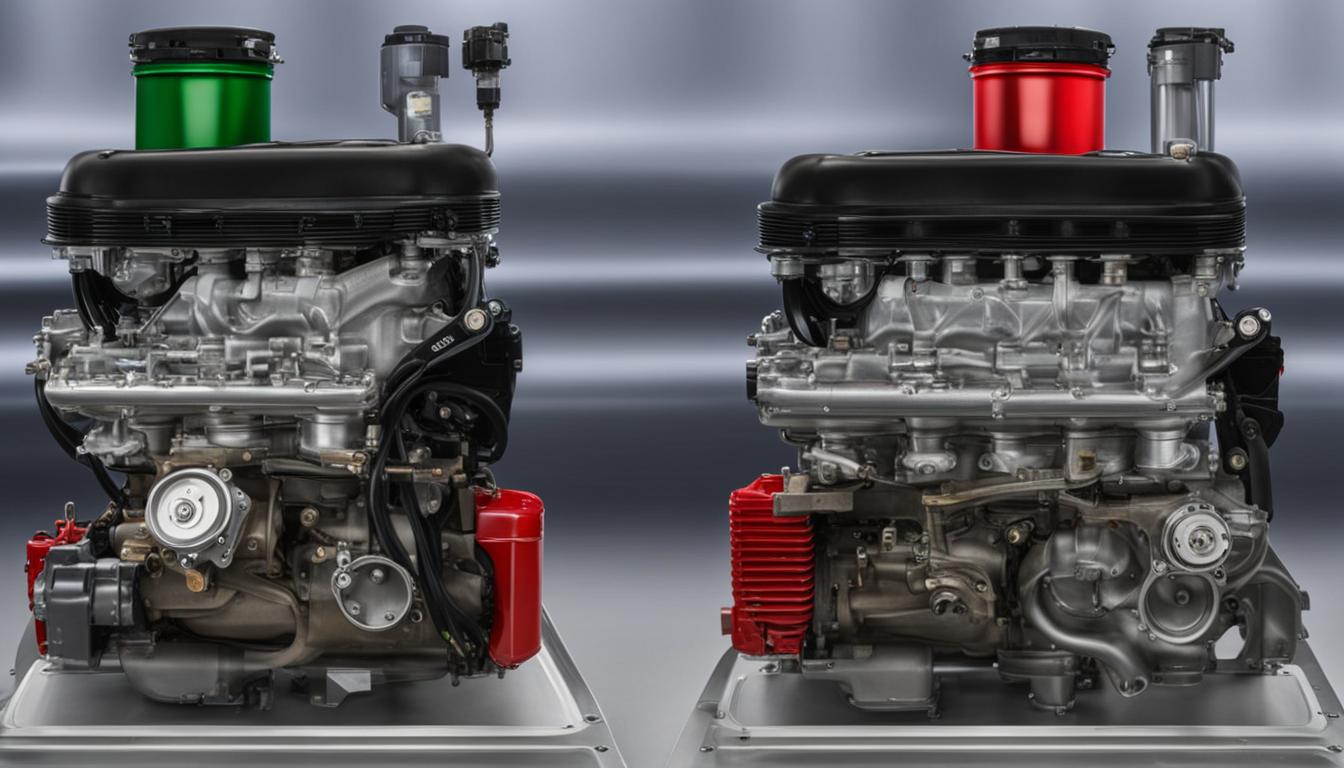Using a proper oil mix ratio is very important for the engine. Because mixing too much oil can cause failure to burn gasoline properly. Otherwise, if you don’t use the right amount of oil, it’ll wear the engine out.
So how do you know which oil mixture will be best for you to use, 50:1 vs 25:1?
As you see, the 50:1 oil mixer uses 1 drop of oil per 50 drops of gasoline. So, naturally, the 25:1 mixer is thicker and travels slower than the 50:1 ratio. For the fast flowing, 50:1 oil mix is popularly used by the current manufacturers.
On the other hand, the 25:1 oil mix is the older technique, and at present, it is used mostly on older engines.
To learn more about 50:1 vs 25:1 and their differences, stay with us till the end of this article. Here’s what you need to know to make a choice.
50:1 vs 25:1 Comparison Table
| Factors | 50:1 | 25:1 |
| Engine | 2 Stroke | 2 Stroke |
| Oil Density | Lower | Higher |
| Lubrication | Less | More |
| Viscosity | Less | More |
| Price | Same | Same |
See Also: Laguna 14bx Vs 18bx.
Detail Comparison Between 50:1 VS 25:1

If you want to learn deeply, there is no other way but to read the comprehensive comparison between the two. After reading the whole discussion, you’ll definitely be able to conclude.
Oil Density and Lubrication
A 50:1 oil mix ratio determines 50 units of gas mixes with one unit of oil drop. Similarly, 25:1 means 25 units of gas for a single drop of oil.
25:1 oil mix is denser, and it offers more lubrication than 50:1. So it’s a good choice for an older engine. Otherwise, 25:1 oil mixes produce lots of emissions since too much oil can’t be burnt properly.
Besides, the lubricant of the 50:1 oil mixer is enough for newer engines.
Verdict: 25:1 for older engines and 50:1 for newer engines.
Viscosity
Viscosity refers to the overall flow defiance of a liquid. That’s why honey has better viscosity compared to water.
However, as the 50:1 oil mixture moves very fast so it’s a perfect match for the 2-stroke engine as they wear out very fast.
Typically, a 2 stroke engine features a high revolutions per minute (RPM), which requires lubrication at the right time. If the oil is unable to reach in time, its piston will get scratched.
Speaking of 25:1, if you want a better flow resistance then look for a 25:1 gas/oil mixture. The viscosity of 25:1 is the ideal match for older chainsaws. As older chainsaw models demand more lubrication, their 25:1 ratio can provide more than enough.
However, viscosity varies in different grades of oil. Remember these numbers are the vital factor in mixing and are called SAE grades.
Verdict: 25:1 for older chainsaws and 50:1 for newer chainsaws.
See Also: 40:1 vs 50:1.
How To Mix 50:1 or 25: 1 Oil Ratio?

Till now we have only learned the benefits and shortcomings of both ratios. But how do you mix a 50:1 or 25:1 ratio?
50:1 and 25:1 Ratio Formula (Imperial Method)
In this imperial method of mixing the two ratios, you just remember two values and calculate them.
- For a 50:1 ratio, you’ll need 1 gallon of gasoline for 2.6 fluid oz of oil
- For a 25:1 ratio, you’ll need 1 gallon of gasoline for 5.2 fluid oz of oil
Here we showed a small chart in imperial units that helps you to understand the formula..
| Gasoline | 50:1 Ratio | 25:1 Ratio |
| 1 gal | 2.6 oz | 5.2 oz |
| 2 gal | 5.2 oz | 10.4 oz |
| 5 gal | 13 oz | 26 oz |
| 10 gal | 26 oz | 52 oz |
Following the chart now you can easily calculate and determine the correct amount of oil you require. However, if you find this a bit of a hassle, you can also buy pre-blended fuels. They will save your time as well as you can begin your job quickly.
25:1 Fuel Mix Calculator
25:1 Fuel Mix Calculator
Result:
50:1 Fuel Mix Calculator
50:1 Fuel Mix Calculator
Related article: Bora VS Kreg Saw Guide.
Here is another helpful table for the best chainsaw fuel mix ratio
| Ratio | Recommended Oil Mix | Benefits | Considerations |
|---|---|---|---|
| 50:1 | 2.6 oz oil / 1 gal | – Reduced oil consumption | – Carburetor adjustment may be required |
| – Less smoke | – Potential engine damage if not mixed properly | ||
| – Cleaner exhaust | – More frequent spark plug changes | ||
| – Suitable for newer engines | – Not ideal for older 2-cycle engines |
| – Most modern chainsaws are designed for this ratio | – Follow engine manufacturer recommendations | ||
|---|---|---|---|
| 40:1 | 3.2 oz oil / 1 gal | – Increased lubrication | – Possible increased smoke and carbon buildup |
| – Better protection for older engines | – May require carburetor adjustment |
| – Suitable for older 2-cycle engines | – Follow engine manufacturer recommendations | ||
|---|---|---|---|
| 32:1 | 4 oz oil / 1 gal | – Maximum lubrication | – Potential fouling of spark plugs |
| – Ideal for high-performance chainsaws | – May require carburetor adjustment |
| – Recommended for older or heavily used engines | – Follow engine manufacturer recommendations | ||
|---|---|---|---|
| 16:1 | 8 oz oil / 1 gal | – Maximum lubrication | – Excessive smoke and carbon buildup |
| – Recommended for very old or low-quality engines | – May require carburetor adjustment |
50:1 vs 25:1 Which Is Better?
| Ratio | 50:1 | 25:1 |
|---|---|---|
| Oil Mix | 2.6 oz oil / 1 gal | 5.1 oz oil / 1 gal |
| Benefits | Less oil consumption | Better lubrication |
| Reduced smoke | Enhanced engine cooling | |
| Cleaner exhaust | Protection for older engines | |
| Considerations | May require adjustment in carburetor | More frequent spark plug changes |
| Increased risk of engine damage if not mixed properly | Potential fouling of spark plugs | |
| Recommended for newer engines | Suitable for older 2-cycle engines | |
| Most modern 2-cycle engines are designed for this ratio | Engine manufacturer recommendations should be followed |
With the blessings of science and technology now you can get better lubrication in lesser viscosity. At present, synthetic oil is getting much more popular as it is quite efficient in lubricating anything.
Though a 50:1 oil mix is absolutely enough to run an older 2-stroke engine, using a 25:1 oil mix is the safer option. As you know, manufacturers know their products better than others. So you should always use the oil mix according to your manual instruction.
While using 50:1 might have some risks, using 25:1 will keep your engine always safe. So if you prioritize your safety more than efficiency, consider using a 25:1 oil mix.
Final Words
So that’s all about 50:1 vs 25:1. Hopefully, we provide you with all the necessary information for 50:1 and 25:1 oil mixes. Now, you can easily decide which one is better for you and what you should do next.
Carefully and properly mix the oil. Share your thoughts with us in the comments and help your friends to reach this helpful guideline.
Best of luck!
Related Questions
What fuel are 2 Strokes?
There is no internal oil reservoir system in the 2-stroke engine. The oil directly mixes with the fuel. It acts as both the lubricant and fuel at the same time. So when too much oil is added to the mixture, it creates a smoke emission.
Can i use 50:1 instead of 25:1?
Yes, you can use a 50:1 ratio instead of a 25:1 ratio for mixing fuel and oil, but it's important to ensure that the engine manufacturer's recommendations are followed to avoid any potential damage to the engine.
Does 2-stroke oil expire?
Yes, 2-stroke oil expires over time. Typically, the sealed 2-stroke oil takes up to 5 years to expire. But for the open stroke oil, the expiration date might not be longer than 2 years. However, when you mix oil with the fuel, try to use this mixture within 2-3 months.
How long does 2-stroke oil last once open?
Once you open the 2-stroke oil it's better to go in 2 years after opening. Otherwise, it will expire and be unable to be used further.
What do 50:1 and 25:1 refer to?
50:1 and 25:1 refer to the ratio of gasoline to oil that should be used in two-stroke engines. For example, a 50:1 ratio means that 50 parts gasoline should be mixed with 1 part oil.
Which ratio should I use for my two-stroke engine?
The ratio you should use for your two-stroke engine depends on the manufacturer's recommendations. Some engines require a 50:1 ratio, while others may require a 25:1 ratio. Check the owner's manual or contact the manufacturer for guidance.
What happens if I use the wrong ratio?
If you use too much oil (a lower ratio), the engine may produce more smoke and carbon buildup. If you use too little oil (a higher ratio), the engine may suffer from inadequate lubrication and increased wear and tear.
Can I switch from 25:1 to 50:1, or vice versa?
Again, this depends on the manufacturer's recommendations. Some engines may be able to handle a change in ratio, while others may require a specific ratio for optimal performance. Check the owner's manual or contact the manufacturer for guidance.
How do I mix gasoline and oil for my two-stroke engine?
To mix gasoline and oil for a two-stroke engine, first determine the ratio required by the manufacturer. Then, add the required amount of oil to an empty gasoline container, and slowly add the gasoline while stirring. Finally, pour the mixed gasoline and oil into the fuel tank of the engine.
Can I use pre-mixed gasoline and oil in my two-stroke engine?
Yes, pre-mixed gasoline and oil is available for two-stroke engines. However, it may be more expensive than mixing your own fuel, and you should still ensure that the ratio is appropriate for your engine.
Does chainsaw oil expire?
Chainsaw oil does not typically expire, but it can degrade over time, so store it properly in a cool, dry place.
How to mix chainsaw gas?
To mix chainsaw gas, combine the recommended ratio of 2-cycle oil and gasoline in a suitable container.
Can you use 50 to 1 in 40 to 1?
You can use a 50:1 mix in a chainsaw designed for 40:1, but it may affect engine performance or warranty.
Is 50 1 ratio good?
A 50:1 ratio is good for some modern chainsaws, but always follow the manufacturer's recommendations for the correct oil-to-gas ratio.
what happens if you use 50/1 fuel in a 40 1 engine?
Using a 50:1 fuel mixture in a 40:1 engine can lead to inadequate lubrication, potentially causing engine damage due to insufficient oil content in the fuel mixture.
How many ounces of oil for 50 to 1 ratio?
Using a 50:1 fuel mixture in a 40:1 engine can lead to inadequate lubrication, potentially causing engine damage due to insufficient oil content in the fuel mixture.















